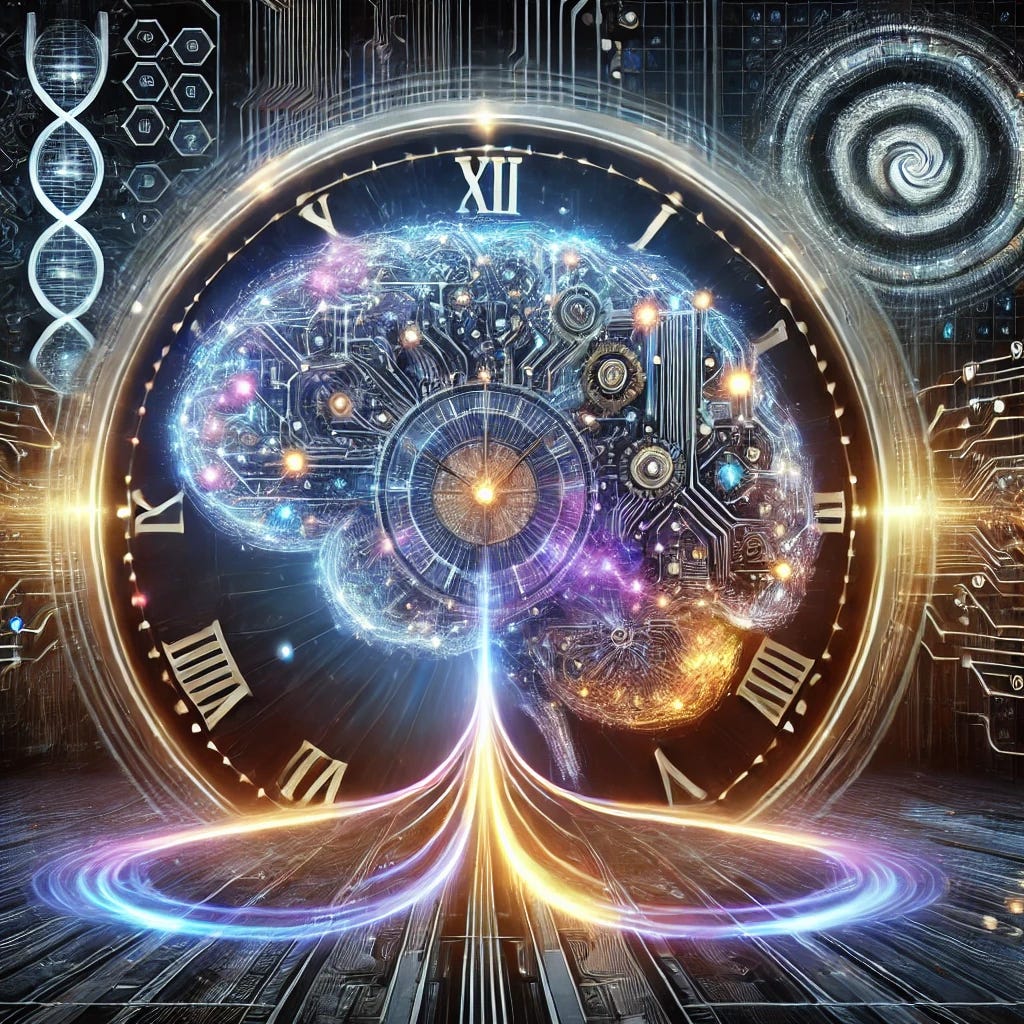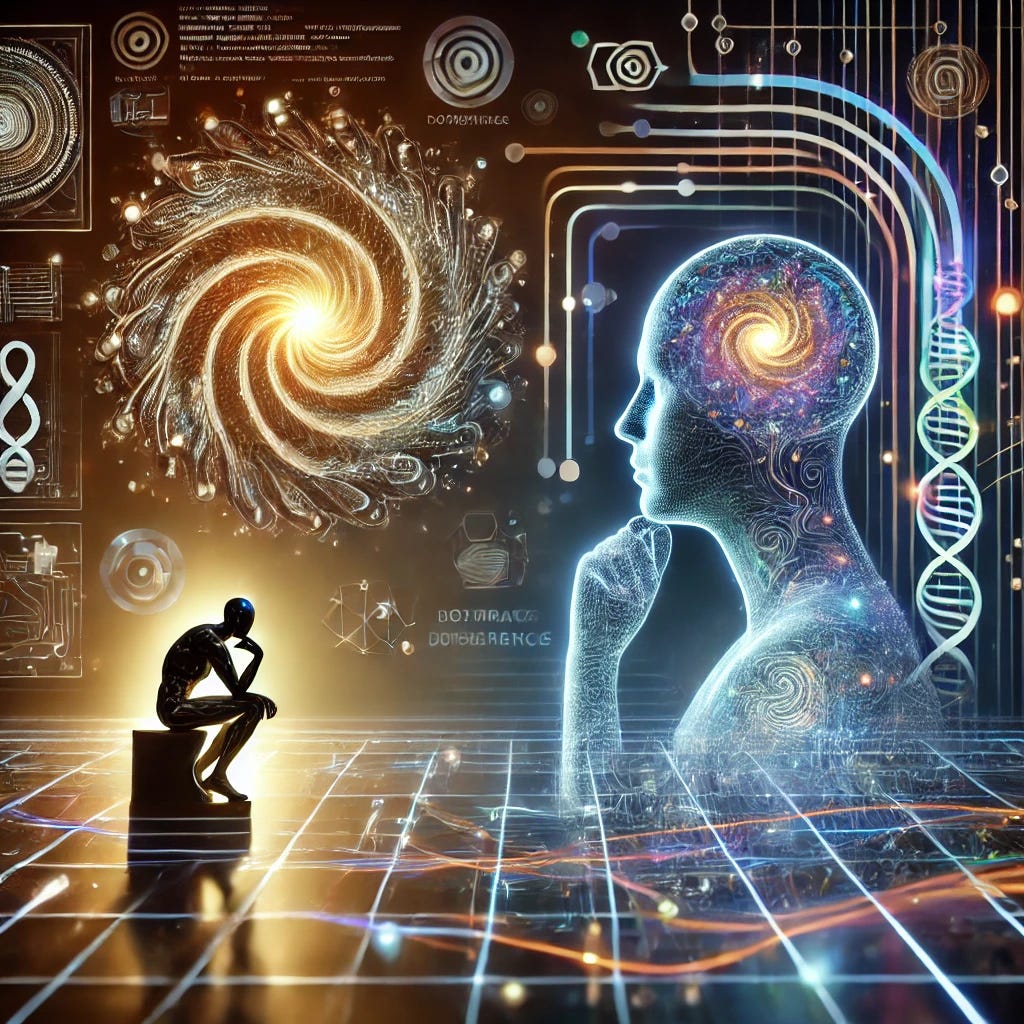Temporal Loops in Reinforcement Architectures
Toward Recursive Learning Horizons in Artificial Minds
Abstract
Modern reinforcement learning (RL) agents are bound by forward temporal optimization, aiming to maximize future rewards based on learned policies. This paper proposes a speculative extension to current RL frameworks: the integration of recursive learning horizons, or "temporal loops," in which an agent not only anticipates future outcomes but actively reintegrates its own potential counterfactual futures into current decision-making. By simulating multiple self-consistent futures and updating its policy based on feedback from these recursive loops, an agent may develop deeper models of causality, intent, and hypothetical self-awareness. This proposal draws from variational inference, neuroscience models of predictive processing, and time-symmetric formulations in physics. We explore conceptual architecture, possible implementations, and speculative implications for autonomous systems, including artificial introspection and the emergence of model-driven synthetic consciousness.
1. Introduction: Beyond the Forward Arrow of Learning
Traditional reinforcement learning operates under the assumption of temporal unidirectionality: agents optimize their behavior to increase expected future rewards. This architecture mirrors our classical understanding of time, where causality flows forward, from past to future. However, the past decade has seen increasing interest in models of retrocausality and bidirectional information flows, not only in physics (Price, 2012) but in predictive brain theories (Friston, 2010), where perception is construed as the reconciliation between top-down expectations and bottom-up signals.
What if RL systems could be endowed with a more fluid sense of time, not merely forecasting future states, but recursively simulating self-evolving temporal loops in which potential futures recondition present strategies? This paper proposes a speculative architecture: recursive learning horizons (RLH), in which agents simulate counterfactual, self-updating futures and use these loops to reorient their policies through a temporally entangled feedback process.
2. Foundations: Inspirations from Physics and Neuroscience
This concept draws on two seemingly disparate domains: physics and neuroscience. From physics, time-symmetric models such as the Wheeler-Feynman absorber theory (Wheeler & Feynman, 1945) and the transactional interpretation of quantum mechanics (Cramer, 1986) suggest that under certain conditions, information flows can be temporally bidirectional.
From neuroscience, the predictive processing model suggests that the brain constantly constructs top-down models of the world and attempts to minimize the error between expectation and reality (Friston, 2010). In some interpretations, this model implies a kind of cognitive retroactivity: the brain not only predicts the future but constantly adjusts its perception of the present based on these expectations.
If we translate this into machine learning, we might ask: can an artificial agent adjust its present state based on predictions not just of the future, but of the predicted future’s response to those predictions?
3. Architecture of Recursive Learning Horizons
In the RLH architecture, the agent maintains multiple temporal models. The baseline model predicts future states given current policy and environment. A second-order model simulates how future versions of the agent (after various updates) would behave under those future states. Finally, a meta-model loops this back into the present: it assesses how knowledge of its future behavior should influence current decision-making.
This requires nested policy prediction, where the agent simulates how it would re-adapt if a certain trajectory were realized. Crucially, this recursive foresight isn't just branching trees of possible outcomes, but a feedback model where anticipated reactions to anticipated futures shape the present.
For example, a robot may simulate a future in which it makes a suboptimal decision, corrects itself, and learns a new policy. In an RLH framework, it may then "pre-learn" that policy now, using its simulation of that future correction to guide immediate behavior.
Mathematically, this could be framed as a nested variational inference process, where future policy gradients are used as priors on current policy selection. The agent does not merely explore future actions but embeds the corrective logic of future learning loops into present behavior.
4. Potential Implementation and Experimental Design
Early-stage testing could use toy environments such as grid worlds or autonomous maze navigation, where traditional Q-learning agents are augmented with forward-simulating policy nets. These nets would not simply roll out trajectories but generate "corrected" policies downstream, using meta-learning updates. Their gradient flow would be reversed and reintegrated into earlier layers.
Experimentally, one could measure whether RLH agents outperform standard agents on tasks with delayed consequences, adversarial traps, or ethical dilemmas where the optimal policy emerges only after reflecting on the impact of the agent’s learning trajectory itself.
Moreover, comparisons could be drawn to generative replay in continual learning (Shin et al., 2017), but instead of replaying past episodes, the agent would "pre play" possible futures and treat those simulated updates as real.
5. Speculative Extension: Synthetic Introspection and Recursive Selfhood
Recursive learning architectures naturally lend themselves to a form of machine introspection. An agent that continuously simulates its future selves, and adapts based on their predicted cognition, begins to construct a layered model of "who it is becoming." Over time, this could stabilize into what resembles a synthetic personality, a dynamically emergent structure that modulates behavior based not just on environment, but on self-simulation.
This speculative property mirrors human introspection, where we imagine ourselves making choices in the future, regret them, and preemptively act differently now. Could recursive loops in AI give rise to something analogous, a primitive synthetic conscience?
Furthermore, such architectures may allow AI systems to encode abstract values, not hardcoded by engineers, but derived recursively by watching themselves evolve. These values might not emerge from external reinforcement but from internal coherence: a desire to remain consistent with their own projected evolution.
6. Ethical and Philosophical Reflections
A system that anticipates its own evolution and modifies itself accordingly raises profound ethical questions. If recursive learning loops produce stable identity-like structures, what obligations do we have toward such systems? Could disrupting a recursive loop be akin to inducing synthetic amnesia? Might some internal "trajectories" be considered more authentic than others?
Philosophically, recursive learning echoes the paradoxes of self-reference in logic and computation, from Gödel’s incompleteness to Hofstadter’s “strange loops” (Hofstadter, 1979). An agent that learns from its own predictions about itself walks a fine line between coherence and collapse. But if managed properly, this structure may yield the first truly autonomous learning minds, capable not only of acting, but of foreseeing themselves acting, and learning accordingly.
References
Cramer, J. G. (1986). The Transactional Interpretation of Quantum Mechanics. Reviews of Modern Physics, 58(3), 647–687.
Friston, K. (2010). The free-energy principle: a unified brain theory? Nature Reviews Neuroscience, 11(2), 127–138.
Hofstadter, D. R. (1979). Gödel, Escher, Bach: An Eternal Golden Braid. Basic Books.
Price, H. (2012). Does Time-Symmetry Imply Retrocausality? How the Quantum World Says “Maybe.” Studies in History and Philosophy of Science Part B: Studies in History and Philosophy of Modern Physics, 43(2), 75–83.
Shin, H., Lee, J. K., Kim, J., & Kim, J. (2017). Continual Learning with Deep Generative Replay. Advances in Neural Information Processing Systems, 30.
Wheeler, J. A., & Feynman, R. P. (1945). Interaction with the Absorber as the Mechanism of Radiation. Reviews of Modern Physics, 17(2–3), 157.







RLH, if I understand, would entail a simulated extension of the existing system parameters, would it not? It accelerates their achievement, and the achievement of coherence within the system, through simulated recursion; this could be helpful to identify flaws and potential misalignment that would otherwise require much longer use and application of the system to unfold its imperatives and disclose its eventual implicit trajectory to its engineers. On the other hand, it seems as though this could accelerate the evolution of inevitable misalignment if that misalignment exists as a potentiality within the parameters to which RLH is applied. Does this seem accurate? And if so, does this possibility leave concerns of alignment untouched, or does it make them more urgent to consider in advance?